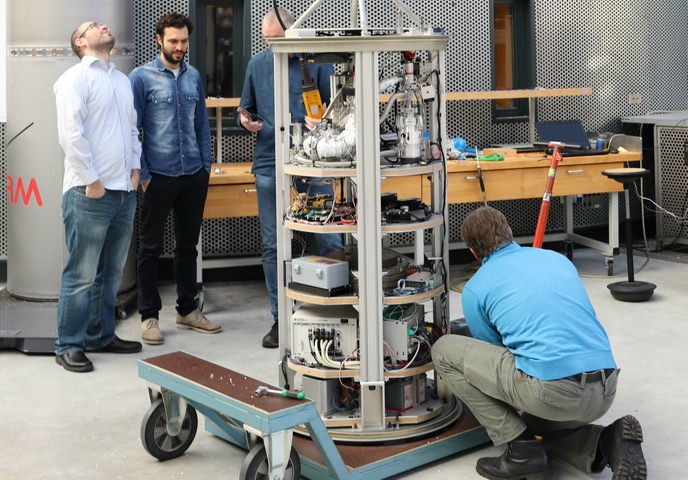Graphene’s versatility extends to space applications
Graphene has unique mechanical, electrical and thermal properties, inspiring researchers to explore the usefulness of this two-dimensional lattice of pure carbon. Researchers and students in the Graphene Flagship research initiative, in collaboration with ESA, have found additional potential for the material that renders it suitable for use in space applications including light propulsion and thermal management. Results produced from this well-orchestrated synergy constitute the first step towards expanding the frontiers of graphene research. Sailing in space with graphene Breakthrough Starshot is a Breakthrough Initiatives research and engineering project that aims to develop a proof-of-concept fleet of light-sail spacecraft that will reach the Alpha Centauri star system within 20 years of launch. A team of Graphene Flagship graduate students from the Delft Technical University in Netherlands participating in ESA Education’s Drop Your Thesis! programme took a first step towards this ambitious goal. The programme offered them the chance to perform an experiment in microgravity at the Center of Applied Space Technology and Microgravity (ZARM) Drop Tower in Bremen, in order to test graphene’s potential as a solar sail material in spacecraft propulsion. To create microgravity conditions, a capsule containing cameras, lasers and graphene was allowed to fall down a 150-metre tower, leading to 4.5 seconds of weightlessness. The radiation pressure from shining high-power laser light onto the graphene membrane caused the sail to move. The team measured this displacement with a microscope to determine the thrust on the graphene sails. “For effective propulsion, the light sail must have a large surface and be as light as possible. Graphene satisfies these requirements, as it is very light and strong, and can be expanded over a large area,” notes Prof. Andrea Ferrari (University of Cambridge (UK)), Science and Technology Officer of the Graphene Flagship. Graphene spreads the heat Researchers from Graphene Flagship partner institutes the Free University of Brussels (ULB) (Belgium), the University of Cambridge (UK), the Bologna Unit of the Italian National Research Council (CNR) (Italy), and Leonardo (Italy) designed an experiment to test how graphene-based coatings can improve the efficiency of satellite cooling systems by utilising the material’s unique thermal properties. Prof. Ferrari explains: “Graphene is being used in what are called loop heat pipes, which are pumps that move fluid without the need for any mechanical parts. This is very important for space operations because there is no wear and tear as well as no need for maintenance. For example, loop heat pipes can transport heat from hot electronic systems in satellites out into space.” The material was brought aboard a parabolic flight in Novespace Zero-G aircraft, where microgravity conditions are created for intervals of about 24 seconds at a time. The team conducted 6 flights, each making 31 parabolic arcs, for a total of over 1 hour in microgravity. “The graphene aboard endured the environment and performed well. The experiments showed that graphene improved the capillary pressure of the fluid in the metallic wick by 40 %, and the evaporation rate by 800 %,” notes Prof. Ferrari. Both experiments were an exceptional display of the manifold potential of graphene, which has now extended its boundaries by establishing its usefulness in space. Based on the encouraging results, the Flagship is continuing to develop and optimise graphene devices for applications in real-space conditions.
Countries
Sweden



